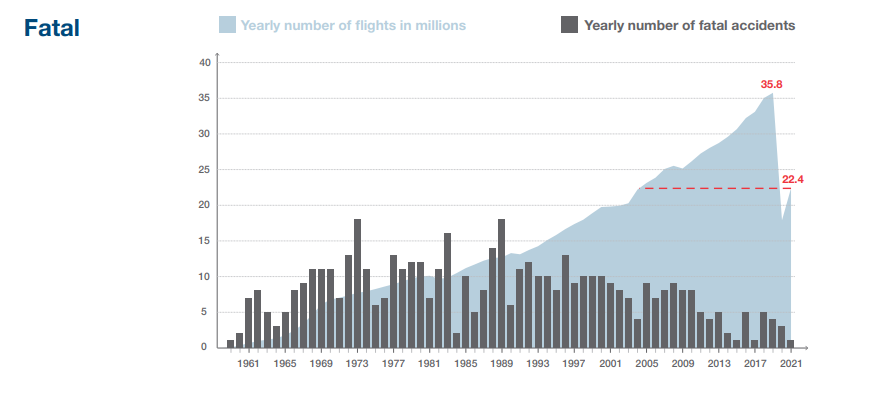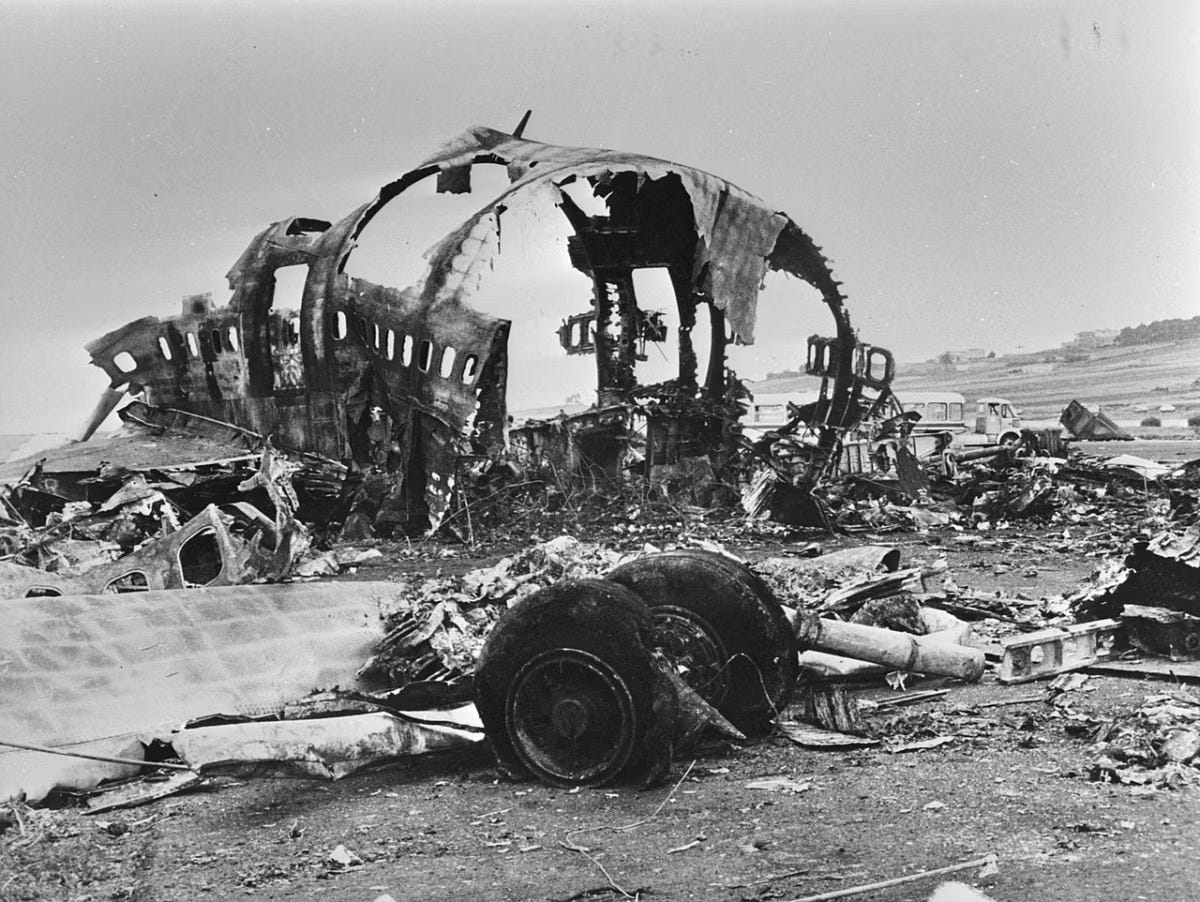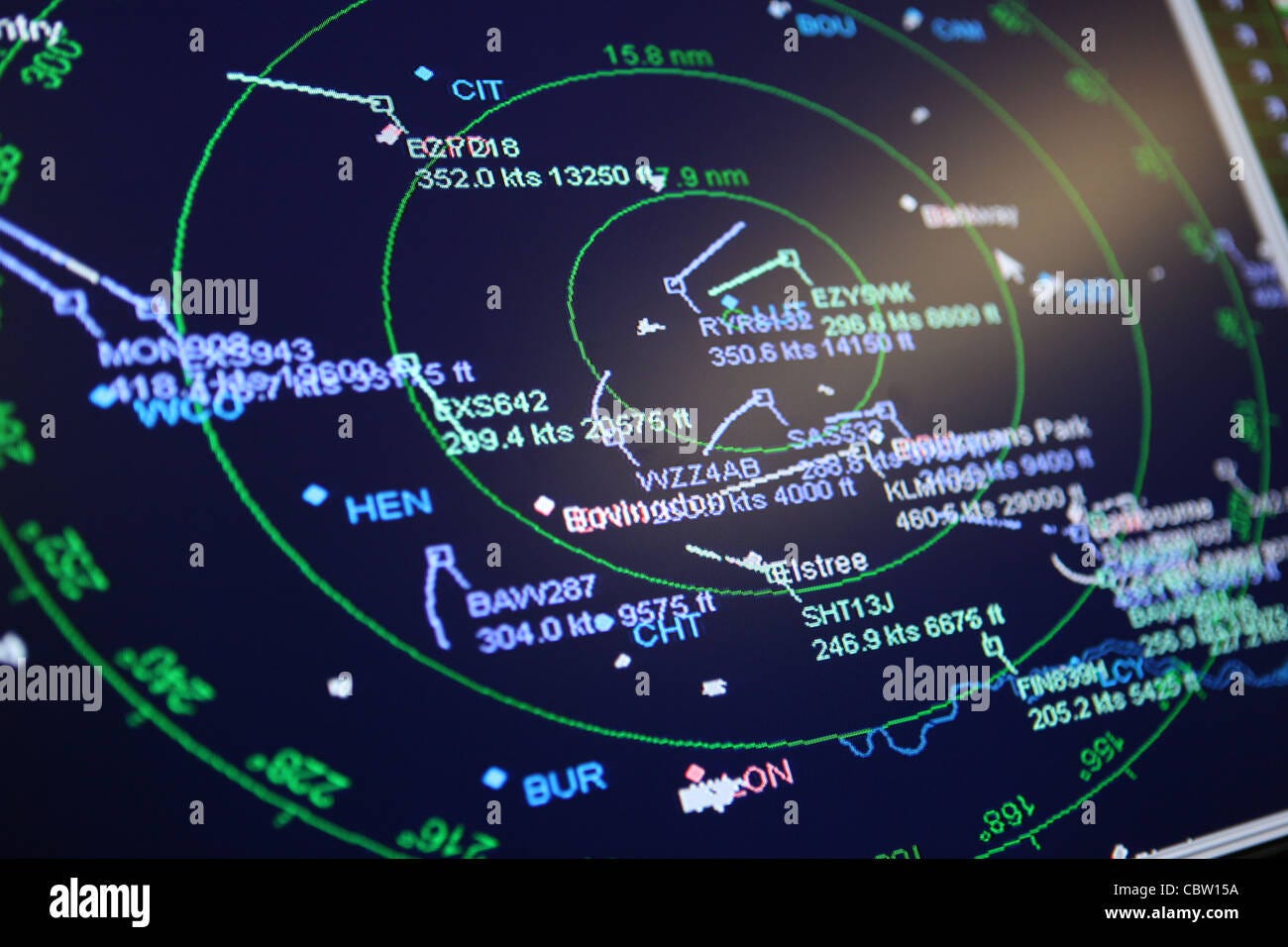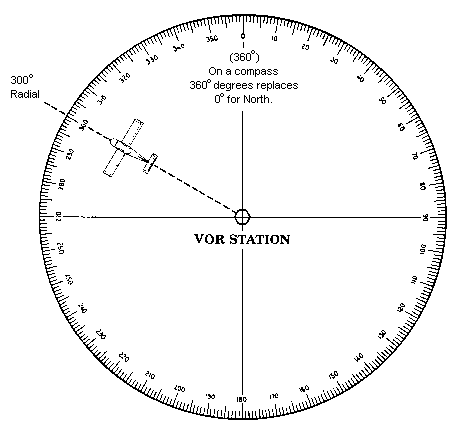Visit the Evidence Files Facebook and YouTube pages; Like, Follow, Subscribe or Share!
On August 21, the New York Times posted a provocative piece titled, “Airline Close Calls Happen Far More Often Than Previously Known.” The United States boasts that it runs the world’s safest skies among all countries in commercial aviation. Indeed, the last fatal commercial air crash in the USA occurred in 2009, in my hometown—an incident which took someone I knew. Still, it is overall an enviable record, the longest running stretch in US history, in fact. Yet, many people fear flying because the prospect of plummeting out of the sky to one’s demise is simply terrifying—even though the overwhelming majority of aircraft incidents occur below 1,000 feet. Moreover, mile-for-mile, aviation is the safest form of transportation by significant numbers. Over the past 60 years, the accident rate has dropped precipitously as indicated in the following two graphs.
Source: Airbus
What the New York Times was pointing out is that current conditions are endangering this record. It highlighted two primary problems: 1) a shortage of air traffic controllers and 2) a lack of ground-based safety features at US airports. On the first point, Transportation Secretary Pete Buttigieg readily conceded the point. He said that “The (staffing) gaps that we’ve seen have built up over years. This is nothing that we can’t prepare for going into this summer. But this is part of why we’re working so hard to train new air traffic controllers.” In fact, the Federal Aviation Administration (FAA) recently announced that it has already hired 1,500 new controllers, and has 2,600 more currently in training.
Regarding the second point, Matthew Lehner, an FAA spokesman, told the NYT that the FAA lacks funding to install more enhanced ground control safety systems. Many—maybe most—commercial airports in the USA already do operate systems related to weather hazards. Low Level Wind Shear Alert System (LLWAS), Terminal Doppler Weather Radar (TDWR), Weather Systems Processor (WSP), and Integrated Terminal Weather System (ITWS) all provide pilots and air traffic controllers with crucial information to prevent weather-related incidents, especially during takeoff and landing. Weather remains a potential, though small, hazard, but the greater issue involves traffic separation.
Over the last half century, the aviation industry has developed numerous technologies to assist pilots with maintaining the necessary distance between planes to operate safely while in the air. As many commercial airliners travel around 500 mph (804 kph), distances can shrink very quickly. Separation between aircraft includes both lateral and vertical separation. The required distances vary based on several factors, but generally it is the pilots’ responsibility above all to ensure adequate separation. For this reason, modern commercial aircraft possess many onboard systems to assist pilots with maintaining the proper distance from other planes.
While in-flight, perhaps the most critical technology onboard aircraft is the Traffic Collision and Avoidance System (TCAS). TCAS communicates via aircraft transponders to determine when a potential conflict might occur. As planes move through the air, their transponders regularly broadcast information about their whereabouts. The TCAS receives these transmissions and continuously evaluates the possibility of an intrusion into its space using “if-then” commands. If it determines that a nearby plane might come too close, it releases a Traffic Alert or Resolution Advisory to the pilots. A Traffic Alert warns the pilots to a pending traffic situation to put them on guard in the event they need to make a course correction. When a collision is imminent, TCAS issues a Resolution Advisory. The Resolution Advisory gives instructions for how the pilots should maneuver (climb or descend). Its alert comes both in audio and visual forms. Because the system is mounted on both planes facing a possible collision, the TCAS directs each of them to take an opposite action (meaning, one is told to climb while the other is told to descend). FAA rules require that pilots respond to the TCAS advisory irrespective of any contradicting clearance or instruction by Air Traffic Control. This standard has been adopted globally. Since the implementation of TCAS, in-air collisions of commercial aircraft are vanishingly rare. [There was a mid-air collision over Germany in 2002 between a commercial passenger aircraft and a cargo plane, but the pilots of the passenger craft did not follow the TCAS alert, and instead listened to an erroneous command from Air Traffic Control.]
A similar system, the Airborne Collision Avoidance System (ACAS), seeks to take collision avoidance a step further. Developed at the Johns Hopkins University Applied Physics Laboratory and MIT Lincoln Laboratory, ACAS “directs the computer to make decisions based on probability distributions for possible outcomes at each step in a time sequence, because the exact circumstances for those decisions can be only partially known ahead of time.” ACAS uses probability distributions to account for potential errors in transponder information as well as any variations that might occur in the seconds leading up to a potential collision event. It recalculates the probability of where each plane will be every second. This helps make corrections for a plane that shifts with the wind or in cases where pilots themselves make a course change. Not fully implemented yet, researchers seek to incorporate ACAS as an additional measure to accompany TCAS.
Separation between flying planes is not the only risk area. Far more frequently, aircraft on the ground create hazards to each other. The most dangerous type of incident occurs when two aircraft attempt to occupy the same runway at the same time. In 1977, an incident in Tenerife in Spain’s Canary Islands, brought this issue to light in the most disastrous form possible. Pan Am flight 1736 and KLM flight 4805, both monstrous Boeing 747s, filled with hundreds of people each, collided on the runway at the small island airport. Nearly 600 people lost their lives.
Tenerife post-accident remnants; source: Wikimedia Commons
The tragedy at Tenerife vividly displayed the need to enhance coordination of aircraft in and around airports. At large airports, hundreds of thousands of flights move through per year. In Atlanta, for example, there were more than 724,000 touchdowns or takeoffs in 2022. That means Air Traffic Controllers must account for roughly 2,000 landing or departing commercial flights every day. Such volume creates an atmosphere of considerable risk that two aircraft might collide.
Heavy traffic: air traffic control radar screen of aircraft above Luton airport, UK
One system airports use to coordinate traffic is called the Airport Surface Detection System — Model X (ASDE-X). ASDE-X employs numerous data sources to provide air traffic controllers location and movement data of aircraft and other vehicles on the surface areas of airports. Data sources include:
Surface surveillance radar located on top of the air traffic control tower and / or surface surveillance radar located on a remote tower
Multilateration sensors located around the airport
Airport Surveillance Radars such as the ASR-9
Automatic Dependent Surveillance — Broadcast (ADS-B) sensors
Terminal automation system to obtain flight plan data.
Computer systems analyze this data to inform controllers of the position of ground traffic, allowing them to predict potential conflicts among planes and other vehicles on the ground, as well any possible misalignment between ground traffic and incoming aircraft. Particularly useful during low visibility situations, the system also issues audible and visual alerts when it detects the possibility of a pending collision. So far, just 35 airports in the USA use this system.
Watch: Air Canada 759 nearly plows into numerous waiting aircraft on the taxiway
Many airports utilize the older Airport Movement Area Safety System (AMASS), developed and implemented in the 1990s. This system is a predecessor to the ASDE-X system and is limited in its sensing capability. For its time, however, AMASS was considered “state of the art” as it was among the first to provide air traffic controllers with audible and visual warnings of impending collisions on any of the surface areas of an airport. By 2005, most commercial airports were encouraged to employ this system in their regular operations, and many still do.
Another system some airports use is called the Advanced Surface Movement Guidance & Control System (A-SMGCS). It conducts four major functions: Surveillance, Control, Planning/Routing, and Guidance. A-SMGCS augments older systems by offering advanced identification and location of vehicles moving in the controller’s coverage area. Using predetermined parameters, the system can alert controllers of pending conflicts between aircraft, ground-based vehicles, or both. It also prevents controllers from inputting commands that conflict with the current conditions, thereby eliminating the possibility of controllers giving pilots clearances that could endanger them. The system also advises the controller when vehicles—whether ground or aircraft—deviate from clearances on runways, taxiways, or aprons. In addition to conflict alerts, the system provides controllers with optimized taxi routing to enhance the efficient movement of planes to or from runways. This helps get aircraft to their respective gates or in a position for takeoff more quickly, thereby reducing potentially dangerous traffic jams. Furthermore, to mitigate the burden on controllers, the system automatically controls switching on and off the requisite taxiway lights based on inputted aircraft routing.
Unfortunately, there remain some commercial airports that do not utilize any of these systems and instead rely largely on the line-of-sight of air traffic controllers. Other airports frequently endure temporary outages of their ground safety systems, forcing them to defer to the old fashioned method of ‘looking’ as well. At Los Angeles International, for example, 39 separate failures left the airport without a ground safety system for a total of 160 days between 2016 and the end of 2018. This is not uncommon among many of the United States’ largest airports.
The two areas identified by the New York Times remain the focal point for ensuring that no incursion happens that will lead to loss of life on the ground at airports. A detailed study carried out in 2015 noted that controllers are the frontline against dangerous conflicts at airports. The systems highlighted above are not meant to replace human controllers. Rather, they enhance controllers’ ability to manage ever-growing volumes of traffic, even in less-than-optimal circumstances (such as fog or at night). The technology provides an aid, not an overarching solution, but it is crucial for enhancing the efficiency and accuracy of controllers. This is especially important during a time of personnel shortages. Thus, more airports require upgrades to the more sophisticated systems. At the same time, there is no question that the US government and aviation industry needs to recruit, train, hire, and most importantly, properly fund air traffic controllers. Tens of thousands of lives are on the line.
***
I am a Certified Forensic Computer Examiner, Certified Crime Analyst, Certified Fraud Examiner, and Certified Financial Crimes Investigator with a Juris Doctor and a master’s degree in history. I spent 10 years working in the New York State Division of Criminal Justice as Senior Analyst and Investigator. Today, I teach Cybersecurity, Ethical Hacking, and Digital Forensics at Softwarica College of IT and E-Commerce in Nepal. In addition, I offer training on Financial Crime Prevention and Investigation. I was a firefighter before I joined law enforcement and now I currently run a non-profit that uses mobile applications and other technologies to create Early Alert Systems for natural disasters for people living in remote or poor areas.
Find more about me on Instagram, Facebook, Twitter, LinkedIn, or Mastodon. Or visit my EALS Global Foundation’s webpage page here.
For an article on the safety of aviation in Nepal, click below. Thanks for reading!








